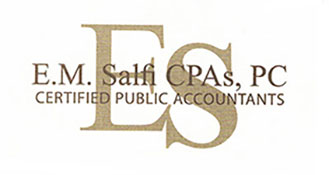Don’t Cash Out Your 401(k) When You Change Jobs
When you change jobs, you typically have several options. If your 401(k) balance is $5,000 or more, you may be able to leave your money in your former employer’s plan. You also can roll the money into your new employer’s 401(k) plan or into a rollover IRA. If the transfer goes directly from your old plan to your new employer’s plan or to a rollover IRA , you can avoid having taxes withheld.
Don’t Buy Too Much Company Stock
Even if you are confident that your company has a brilliant future, it is not a good idea to have your employment income and retirement income dependent on the fate of the same company. Most CPAs agree that you should not have more than 10 percent of your total retirement assets invested in your company’s stock.
Don’t Underestimate The Tax Benefits Of A 401(k)
Keep in mind that each dollar you contribute to your 401(k) is deducted from your taxable income, so you avoid paying income tax on that money until you withdraw it, typically at retirement. You may be in a lower tax bracket at that time and would therefore pay less tax. Since earnings in your 401(k) grow tax-free until withdrawn, your money grows at a faster rate than it would in a taxable investment.
Consider Roth 401(k)
Roth 401(k) combines the traits of a traditional 401(k) with a Roth IRA. Contributions are made with after-tax dollars. Accordingly, there is no immediate income tax savings. However, when you withdraw your contributions and growth during retirement – age 59 1/2 and 5 years in the plan – there will be no income tax due. In addition, there is no withdrawal requirement at age 70 1/2. The Roth 401(k) option makes the most sense when you project your marginal tax rate to be higher in retirement than now.
Rebalance Your Portfolio Early
An annual rebalancing of your 401(k) plan investments help ensure that you maintain a mix consistent with your long-term goals. If you’ve decided to keep 50 percent of your 401(k) in stock funds, a poor market may erode your assets, and put your savings goals off track. By redistributing your portfolio investments, you may be able to better achieve your goals.
Invest For The Long Term
Employers typically offer a range of investment fund options, which are professionally managed and diversified to spread investment risk. Generally speaking, the longer your time horizon, the more you should invest in stock funds. Historically, over the long term, stocks have outperformed bonds and money market funds.
Contribute The Maximum
Your employer may set the maximum contribution as a percentage of salary. If you are 50 or older, you are eligible to make an additional “catch up” contribution. Many employers will match a certain percentage of your contribution to the plan. If you can’t afford to set aside the maximum, try to contribute at least enough to get the full company match. Not doing so is the equivalent of turning down free money.
Take Time To Understand The Rules
Take the time to read the plan material your employer provides. Know when you can enroll, how much you can contribute, if and when the company makes matching contributions, and the number of years until you are fully vested in those matching contributions. And, before investing, be sure to carefully study a fund’s prospectus.
Start Early
There’s a saying that “the key to successful investing lies not in timing the market, but rather time in the market.” That’s especially relevant advice for investing in 401(k) plans. By starting early and contributing regularly, you savings can continue to grow on a tax-deferred basis.
Convert to a Roth IRA
Roth IRAs are popular because when the money is withdrawn in retirement, there’s no tax due. These accounts are enjoying a new surge of popularity now that there’s no longer an income limit on who can convert a traditional IRA to a Roth account.
